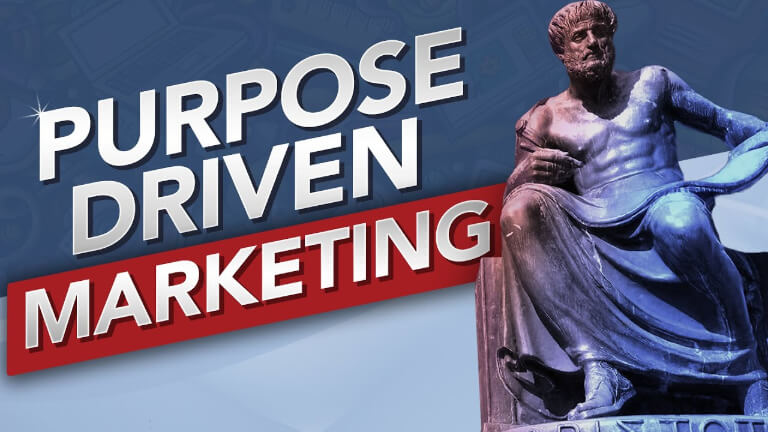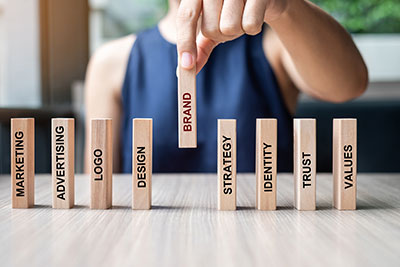
Ethos Pathos Logos Marketing is a philosophy that was created by Aristotle, and his methods are still being used today to create winning marketing campaigns. This ethos logos pathos marketing blog post will discuss ethos logos pathos marketing in detail, with examples of its implementation in the past. It’s important not to oversell yourself but also critical you know the methods behind persuasive sales. If you’re starting out in sales or looking to be more persuasive when selling your services, ethos logos pathos marketing can help improve the quality of your client’s branding and logos.
Why is EPL Marketing Effective?

This is a new topic for me, and I’ve never done it on my site before, so I want to jump in with you because this article will be fairly in-depth. On a whiteboard one-on-one, I’ve done it before, but I’ll use the video above as a reference point to keep the timing aligned and ensure that you guys get the most return on your investment since I downloaded all of my understanding of Ethos Pathos Logos marketing into that video and want to share everything that I can with you to help you achieve your goals!
The EPL Inspiration: Ancient Greek Philosophy

“There are, then, these three means of effecting persuasion. The man who is to be in command of them must, it is clear, be able (1) to reason logically, (2) to understand human character and goodness in their various forms, and (3) to understand the emotions-that is, to name them and describe them, to know their causes and the way in which they are excited.” – Aristotle.
So this quote is essential because you must consider things logically, ethically, and emotionally in order to follow the fundamental ideas of ethos, pathos, and logos. It’s something I’ve been teaching clients for years, and it’s how I’ve set myself apart from the competition in my industry. This ethos pathos logos marketing method will be insanely beneficial for you, so stay with me.
Ethos Pathos Logos Marketing: Ethos
Ethos essentially means credibility. As a seven-figure agency owner and design owner for the past 15 years, I know exactly what it takes to build a successful creative agency that is a good example of credibility. What you want to do to increase your credibility is to look at these five principles:
- Personal Anecdotes. You want to ask yourself: why me? Why should they do business with me? Give them your answers: I value social impact; I’m a giver, not a taker.
- Testimonials. What are people saying about you? Whether they’re video testimonials, written testimonials, screenshots of testimonials, case studies, or reviews.
- Success Stories. Case studies of successes that you’ve had, failures that you have overcome: all these stories are incredibly impactful.
- Your Track Record. What accomplishments have you had? Starting as a guy on the streets and evolving to speaking on stages and doing over 400 YouTube videos is part of my track record, as is generating seven figures as an agency.
- Your Title. Obviously, I’m a seven-figure agency owner. That is my title. I’m a creative CEO, and that is another title that I can use.
These five factors add credibility and that’s why ethos is so important. This is where a lot of people fail as they try to promote their services or their products. They really fail in promoting the credibility of who they are and who their brand is, or they fail to do that for their clients, and the ethos is what builds trust.
Ethos Pathos Logos Marketing: Pathos
Now the second piece to this is pathos, which is the word for emotion. An example of this is: doesn’t it make you angry that most designers don’t make enough money to survive, let alone thrive? That statement elicits an emotional reaction. This is a big deal, this is a big problem, and there’s an emotional reaction of anger that goes into that. Evoking the right emotion takes practice, but it is crucial to successful ethos pathos logos marketing. There are three things to consider when using pathos:
- What emotion do you want to evoke? This is the part where you need to be able to name emotions. Rage is vastly different than an annoyance, and even further from joy. If you don’t understand the range of emotions enough to name them, you will struggle to evoke the right one.
- Make them feel it. This is the part that requires you to know what causes these emotions. This can be tricky since people have different emotional reactions to different things, but there are baselines you can learn for any marketing segment you choose as an audience. This is a common stumbling block.
- Show it to them. Coherence and body language are some of the fastest and most reliable ways to trigger an emotion in people. It’s not just about the content, but it’s also about how you deliver this content. You need to consider coherence, body language, and the tone of your voice (or text). Tonality and tone of voice are important for EPL because they’ll create an emotional trigger and produce an emotional reaction.
When I’m really enthusiastic and worked up, you’re going to be just as excited and pumped up. It’s naturally going to rub off on people if you’re really angry or sad or quiet, so you need to think about ways to use that to your advantage. It’s not just about the information; it’s also about how that information is delivered.
Ethos Pathos Logos Marketing: Logos
Finally, logos is the facts. This is where a lot of people do pretty well but they miss some of the variables so i’m going to break this down for you in detail. The facts sound and factual information and the sound and factual information. I’ll give you an example of this: I’ve helped three designers just in the last month scale to six figures a year. Those are facts. That’s where LinkedIn messaging comes in. I can do this in a variety of ways, including through videos, but being able to announce that I’ve assisted three designers in the past month make six figures each year is a major claim. That’s a big statement, right?
So the things you need to take into consideration when it comes to logos can be put into a framework that looks like this:
- What are the facts? Ex: I helped three designers make six figures per year…
- Qualify the facts. Ex: …in the last 30 days.
- Why do the facts matter? Ex: My knowledge is valuable…
- Quantify the facts. Ex: …and has helped thousands of clients.
So the final logos-driven pitch would read: I helped three designers make six figures per year in the last 30 days; my knowledge is valuable and has helped thousands of clients. Statistics, which I frequently use in my videos and articles, are a part of this framework, as are research, case studies, and white papers.
EPL Worksheet
I’ve actually created a worksheet to help you understand and utilize my Ethos Pathos Logos method with ease. I put a great deal of effort into distilling this classic philosophical and rhetorical topic into an actionable marketing plan and then even more effort into distilling that into an easy-to-use worksheet. However, I still want to give it to all of my readers, subscribers, and followers for free because I know how important it is to have something tangible to invoke logos.
Final Thoughts

